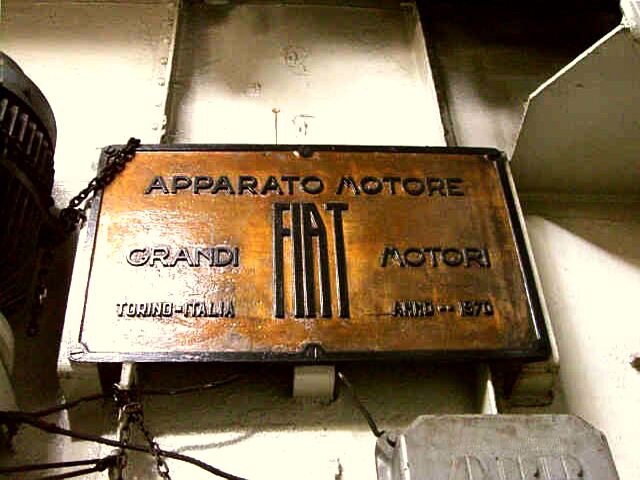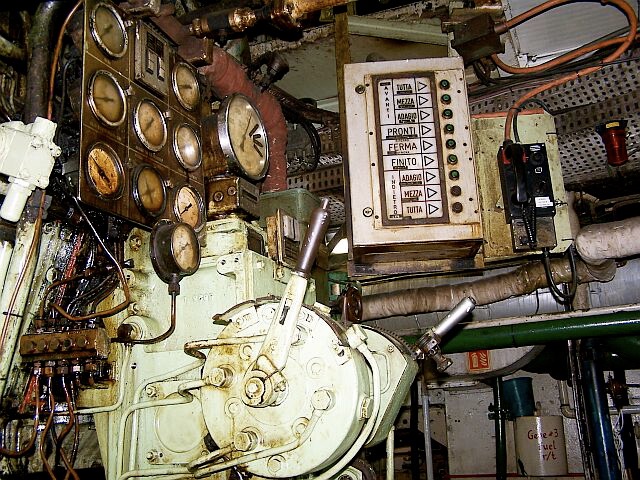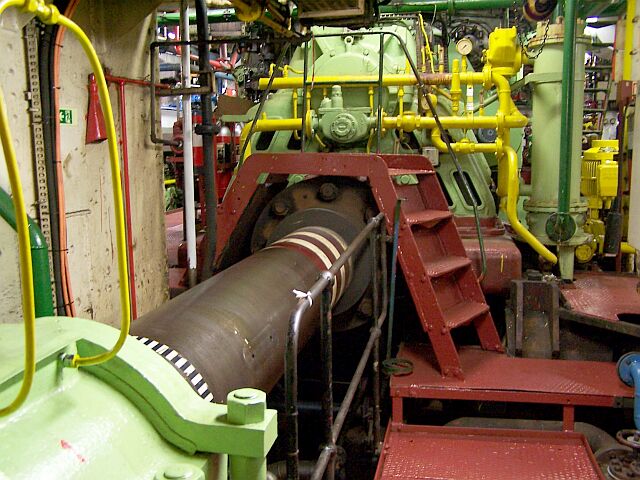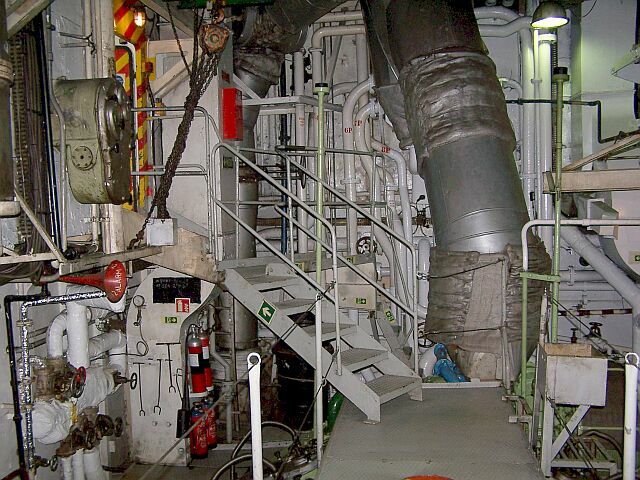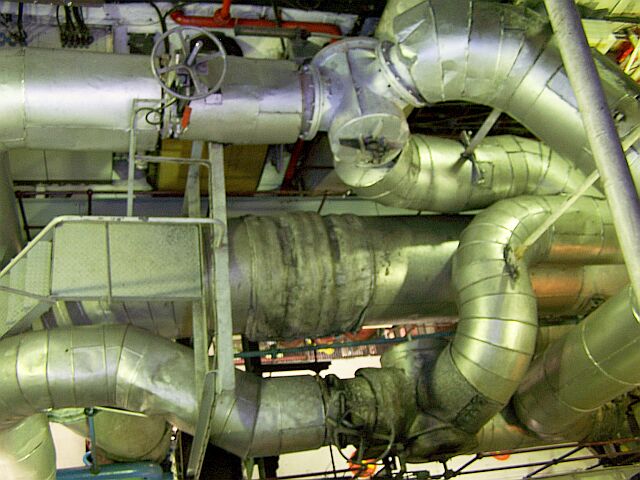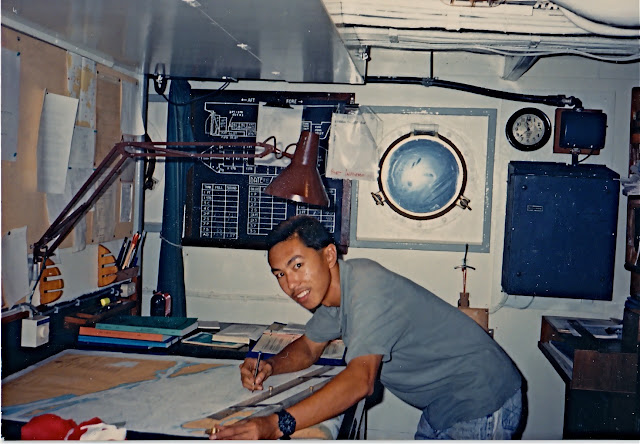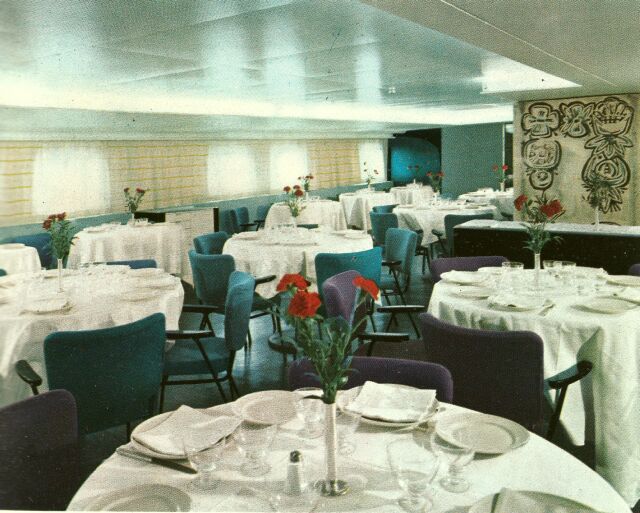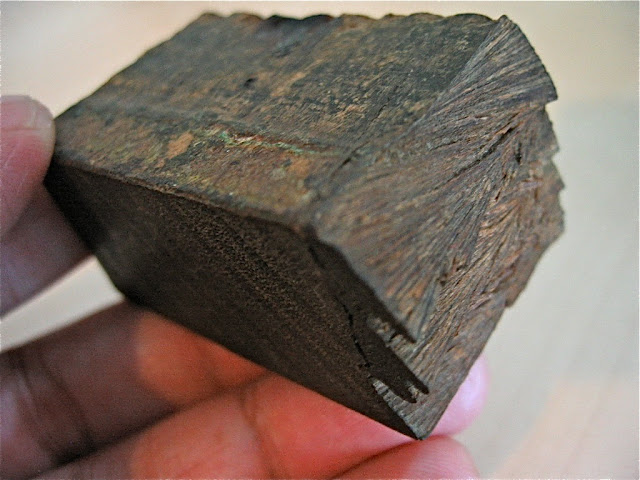It was in La Spezia and the Ansaldo S.A. shipyards at Muggiano, her oil fired steam engines were replaced with a double-acting six-cylinder diesel, which was built by Fiat Grandi Motori Turin. The Medina and Roma were powered by steam before this change.
provided by www.ssmaritime.net
Later in 1970 when she was renamed the Franca C, in Cantieri del Tirreno in Genoa, she was given her second brand new fiat diesel engines, a four stroke, 18-cylinder unit capable of 8,100 HP. The Fiat Diesel engine was able to develop 4,200 HP that gave the ship a respectable speed of 15 knots. This third engine is now the engine aboard the Doulos Phos (renamed when the MV Doulos was taken out of service).
Note the size of the 'spare' cylinders on the left. - provided by www.ssmaritime.net
Secondary manual engine controls. - provided by www.ssmaritime.net
As you see above, the things here are very old. I think you'd only see these in a WWII epic movie like 'Das Boot' (The Boat).
'Top' starboard cylinder-heads. - provided by www.ssmaritime.net
'Lower' engine casing. - provided by www.ssmaritime.net
Engine gearbox, which turns the shaft to the propeller. - provided by www.ssmaritime.net
In the above picture, this is the original shaft from the Medina built in 1914. See my earlier post in 'Artefacts'. One of my responsibilities as Deck cadet on the Bridge was to prepare the vessel to leave. I would inform the Engine Room officer for a 'One hour notice'. I'd run through my checklist (just like an aircraft pilot does). One of the tests we do is the 'Test engines on Air' and 'Test engines on Fuel'. When ready, the Engine personnel will call the Bridge and in less than a minute the whole ship begin to shudder as high pressured air is forced into the cylinders and in turn, turning the propeller while the ship is still tied up. The same goes for 'Test engines on Fuel'.
provided by www.ssmaritime.net
As far as I recalled my time on board, we never run the engines to the max of 100 percent power - only 80 percent. Owing to the fact that its 'ancient' factor put in, you don't want to run this 'old lady' flat out! Our normal 'Full Away' speed was always (depending on sea conditions) within the vicinity of 10 - 12 knots. For your pleasure of knowing, we recorded a maximum speed of 14 knots on our voyage from Taiwan to Korea, this was possible because we were steering to a 'running sea' as opposed to head seas.
Engine room exhaust ducts seen from above. - provided by www.ssmaritime.net
When all the generators, machinery, and the Fiat engine are 'ON', it sounds like a jet engine! Loud!! The Engine room crew were exceptional. They don't see what's outside, nor aware of what is going on in the Bridge, but yet these guys work and stand on 'stations' in extreme heat and sometimes sea sickness; awaiting commands which the only indicator is from the Engine Telegraph control - I salute the guys working down there!
Old switches. - provided by www.ssmaritime.com
Do sign up to follow if you don't want to miss new posts as they appear. Also, do check out a new page 'BRIDGE Logbook'. It's a transcription of my logbook I found recently. It highlights some of the things we faced during voyages. Have a peek.
